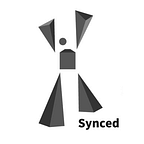German Manufacturing Behemoth Siemens Forges AI-Enhanced IIoT
On July 10th, with German Chancellor Angela Merkel and Chinese Premier Li Keqiang looking on, Siemens AG signed a partnership agreement with Alibaba Cloud — the cloud-computing arm of Internet conglomerate Alibaba — to bring an Industrial Internet of Things (IIoT) upgrade to China’s manufacturing industry.
Founded in 1847, Siemens is Europe’s largest industrial manufacturing company. The AI boom of the last few years has awakened many industries to the tech’s potential, but Siemens has been using AI since the turn of the century to monitor dozens of steel plants. The company also leverages computer vision for CT and MRI analysis; and artificial neural networks for boosting gas turbine and wind farm efficiency, forecasting copper prices and optimizing electric power grids.
In 2001 Siemens acquired more than 20 software companies. In 2017 it invested some €5.2 billion in AI-related businesses, and its global research staff surpassed 40,000. Siemens plans to add an additional €450 million to its R&D budget this year.
In an interview with Synced, Siemens Executive VP and Head of Research and Development in Digitalization and Automation Dr. Norbert Gaus described the company’s AI vision as “covering the full-cycle of design, manufacturing, operations, and maintenance.”
That meant developing a digital solutions package which includes both software and hardware, locally produced parts and cloud-managed data, and can be applied to industrial equipments that have up to 20 years lifespan. Siemens is one of only a few companies capable of managing millions of international devices on the cloud.
Industrial digital upgrading promises to bring down labor costs, shorten unplanned downtimes, improve transition times, speed up production and reduce product defects. But companies still need to think carefully and assess their own needs.
“Most customers do not have a clear grasp of their needs at the outset, so our job is to help customers sort out priorities using simulation verification,” says Li Ming, Director of R&D and product modeling and simulation at the Siemens China Research Institute. His team helps clients build a “digital twin,” which is a virtual replica of their physical assets. Digital replicants and data can create an integrated semantic model to place factory operation in a full operational context.
Once a client decides to proceed, the Siemens team begins its inspection and data collection process: “I’ve been to factories and inspected their PLC — a specialized industrial programmable computer — which stores a lot of unexamined information since most HMIs only extract malfunction warnings. Our team needs to decide on the type of data to extract or collect through new sensor deployments,” explains Li.
Siemens’ major brainy upgrade is “MindSphere,” the cloud-based IoT system the company launched in March 2016 to connect products, plants, systems, and machines. MindSphere enables device management, model implementations, and product lifecycle management tools; in addition to managing data from partners, customers, and suppliers. The system connects to both Siemens’ open Platform-as-a-Service (PaaS) capabilities and AWS cloud services.
Dr. Gaus says “one use case for AI is equipment repair forecast. For gas turbine and train engine failures, repair is very expensive and time-consuming. In the case where we provide warranty services, customers want the fix to be done quickly. AI can help us forecast maintenance intervals and shorten the downtime. We have improved accuracy by 20 percent by deploying neural networks.”
Industrial AI also poses challenges as there is usually less data available compared to the financial or medical industries for example — after all, it is impossible for a steam turbine to have a million failures. “Industrial data is also complex, unstructured, and unlabeled data. There isn’t a special set of training data. We used to resort to simulated models which aren’t good enough, now we focus on creating knowledge maps, which accumulates domain expertise using machine learning and neural networks to solve the data shortage problem,” says Dr. Gaus.
As for asymmetrical and imbalanced data, Dr. Gaus says the solution is to use simulation models to generate data. The Siemens team also uses domain knowledge to customize the design of the network according to data requirements, while making use of equipment data, sensor data, and service and manufacturing reports to form context.
TrendForce projects the size of the global market for smart manufacturing solutions will exceed US$320 billion in 2020, with a focus on providing integrated solutions. As its main competitor General Electrics struggles with digital strategy implementation in the United States, Siemens is taking the lead in the global IIoT race.
The biggest difference between Siemens and competitors such as Microsoft, Intel, and Nvidia is “IoT versus IT”, concludes Dr. Gaus, “which are very different things.”
Source: Synced China https://www.jiqizhixin.com/articles/2018-05-23-13
Journalist: Jingyi Gao | Localization: Meghan Han | Editor: Michael Sarazen
Follow us on Twitter @Synced_Global for more AI updates!
Subscribe to Synced Global AI Weekly to get insightful tech news, reviews and analysis! Click here !
